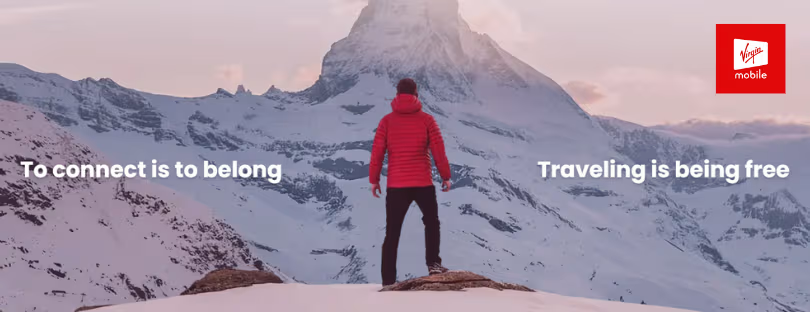
The eSIM Industry Is Obsessed With Quantity — Travelers Actually Need Quality
There’s a weird obsession in the eSIM world right now. Every few weeks, another provider proudly announces that they’ve added 50 more countries or partnered with yet another carrier. On paper, it looks impressive:“Coverage in 200+ destinations!” “Choose from hundreds of providers!” The message is clear — more is better. eS
IM quality vs quantity
But here’s the thing: travelers don’t actually care about having 200 logos plastered on a landing page. What they care about is landing in Madrid, New York, or Bangkok, switching on their phone, and having their eSIM just work. No fuss, no fine print, no endless toggling between plans to see which one will actually give them decent data.
Right now, though, too many eSIM brands are chasing quantity over quality. And travelers are the ones paying the price.
The “more countries” arms race
Let’s start with the obvious. The big bragging point across eSIM websites is country count. “We cover 190+ countries!” “We’re global!” “We’re the biggest!”
But scratch beneath the surface, and you’ll see the cracks. Just because a provider says they cover everywhere doesn’t mean the service is actually good. In fact, half the time, “coverage” means they’ve struck a roaming deal that technically connects you to a local network—but the speed is throttled, the latency is brutal, or the connection drops every time you walk into a café.
Quantity sells because it’s easy to market. But it’s also misleading.
The real traveler experience
Let’s be honest here: most travelers aren’t hopping between 200 countries in their lifetime, let alone a single trip. They’re going to Paris for the weekend. Or Bali for a month. Or maybe on a two-week business trip that takes them through three or four destinations.
What matters to them?
- Does the eSIM activate without a headache?
- Do they get consistent 4G or 5G speeds instead of feeling like they’re on dial-up?
- Will streaming a map or uploading a quick video actually work?
- Can they reach customer support when something inevitably goes wrong?
None of that is captured in a flashy “Now covering 197 countries!” banner.
We compare, you connect. It’s that simple.
The quality gaps no one wants to talk about
I hear the same frustrations from frequent travelers over and over again:
- Spotty coverage: Sure, you technically “connect” in a country, but only to one weaker carrier when better ones exist.
- Slow speeds: Plans promise “4G” but deliver an experience that feels closer to EDGE.
- Complex apps: Some platforms bury important details under endless menus. Others don’t even let you see your data usage in real time.
- Poor support: If your eSIM fails mid-trip, good luck getting a human response before your flight home.
These are the quality issues that actually make or break the travel experience. And yet, they’re constantly sidelined in favor of shouting about “adding more providers.”
Why the industry loves quantity
So why do eSIM companies push quantity so hard? Simple: it’s a race that’s easy to measure.
It’s a numbers game that looks fantastic in press releases and SEO headlines. “World’s largest coverage!” sounds powerful. Investors love it. Affiliate partners can slap it into comparison tables. It feeds the perception of dominance.
But it’s lazy marketing. And it comes at the expense of what matters most: user trust. Because when a traveler pays for a global plan and then can’t even get a stable signal in Rome, that trust evaporates fast.
Quality is harder — but it’s the real differentiator
Here’s the uncomfortable truth: building a truly reliable eSIM service is tough. It means carefully curating which carriers you partner with, not just accepting the cheapest roaming deal. It means investing in infrastructure so activations are seamless, data tracking is accurate, and customer service can respond in real time.
That’s much harder than uploading a bigger number to the homepage.
But it’s also where the real winners in this space will emerge. Because travelers will remember the brand that “just worked” when they landed in Tokyo, not the one that claimed coverage in Antarctica but left them buffering at the airport.
The Apple effect
Apple nailed this lesson years ago. They never bragged about being compatible with more carriers than anyone else. Instead, they obsessed over quality: seamless hardware, intuitive design, and customer experience. The iPhone didn’t win because it worked everywhere. It won because when you did use it, the experience was flawless.
eSIM providers need to take a page out of that playbook.
What “quality” should actually look like in eSIM
Let’s spell it out. Here’s what travelers actually need — and what should be the focus instead of endless expansion:
- Reliable local carrier selection
Not just one weak option. Give users access to the strongest networks in each country, not the cheapest. - Transparent data speeds
Don’t advertise 5G if you know half your destinations throttle data. - Seamless onboarding
Buying and activating an eSIM should be as easy as buying a song on Spotify. One tap, done. - Responsive customer support
If something goes wrong, travelers need a real human — fast. Chatbots don’t cut it when you’re stranded in a foreign airport. - Clear pricing
No hidden fees. No confusing “regional” vs. “global” plans that overlap and contradict each other.
The trust crisis is coming
Right now, the eSIM hype is high. New providers are popping up almost weekly. Travel blogs are stuffed with affiliate reviews. But the cracks are already showing.
I’ve lost count of how many times I’ve heard someone say, “I tried an eSIM and it was a nightmare — I’ll just stick to buying a local SIM card next time.” That’s not a great look for an industry that’s supposed to make travel easier.
If eSIM companies don’t start prioritizing quality over quantity, they risk burning the very travelers they’re trying to win over. And once burned, those customers don’t come back.
The opportunity for smart providers
The good news? The bar is still low. Most players are still locked in the country-count arms race, which means there’s a huge opportunity for brands that take a different approach.
Imagine being the eSIM provider that’s known not for “200+ countries” but for “always works, every time.” That’s a tagline travelers would trust. That’s a reputation that builds loyalty.
Focus on quality now, and you don’t just win customers — you own the category.
Final thought
The eSIM industry needs to wake up. Travelers don’t care about vanity metrics. They care about working connections, fair prices, and support they can actually reach when things go wrong.
More countries won’t fix bad service. More providers won’t matter if the actual user experience is broken.
The future of this industry won’t be won by the company with the biggest number on its homepage. It’ll be won by the brand that travelers can rely on, trip after trip.
And that means putting quality back at the center of the conversation.










